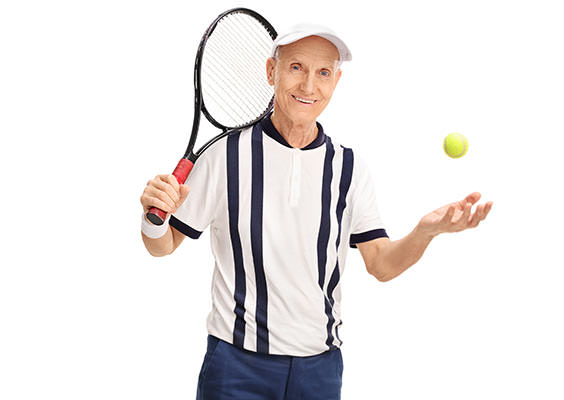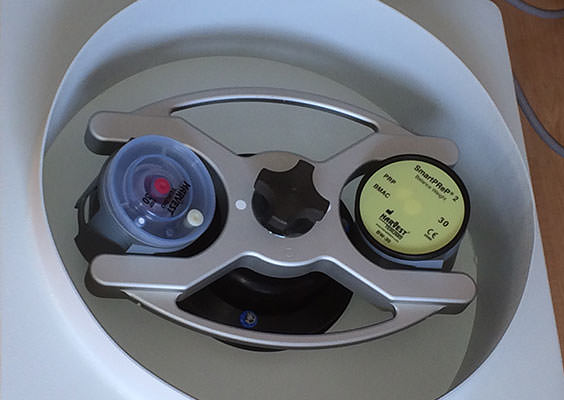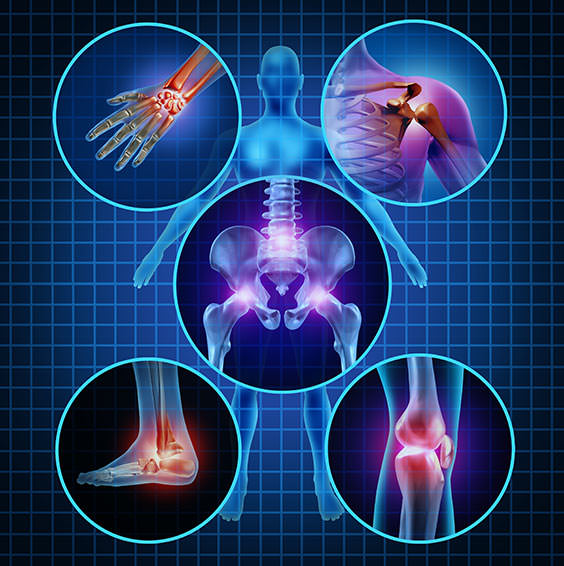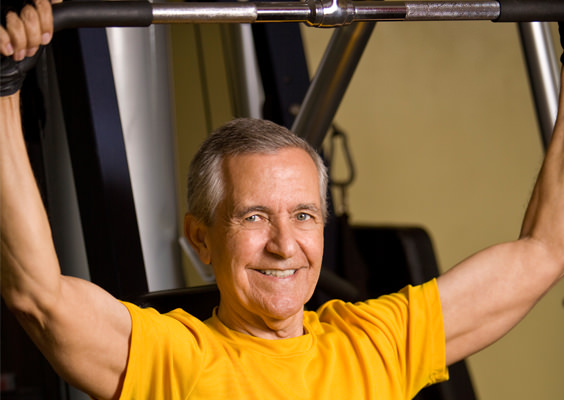There’s a way to heal sports injuries that doesn’t involve surgery, months of physical therapy or a dependence on prescription medication.

It’s called platelet-rich plasma (PRP) therapy.
What Is PRP Therapy?
It’s a form of stem cell treatment that uses platelets — colorless blood cells that help your blood clot — to rebuild a damaged tendon or cartilage. It not only relieves the pain, it also jumpstarts the healing process.
That’s because platelets contain hundreds of proteins called “growth factors.” The natural growth factors in PRP can actually regenerate injured tissues.1
How Is PRP Therapy Done?
The procedure is simple: Blood is drawn and placed in a centrifuge for 15 minutes to separate out the platelets. The PRP is then injected into the damaged portion of the tendon or cartilage with the guidance of an ultrasound machine.

How Effective Is PRP Therapy?
The majority of PRP patients can get back to the golf course or tennis court within three months.
Mainstream medicine is still behind the curve when it comes to stem cells. Some doctors dismiss the latest breakthrough treatments as “experimental” despite a growing number of stem-cell treatment successes and the research that backs them up.
A few years ago, doctors told professional baseball pitcher Bartolo Colon that his career was over. He had severe ligament damage and a torn rotator cuff. Colon then turned to Dr. Joseph Purita, my colleague and one of the world’s leading stem cell therapy and PRP experts.
Colon received injections in which stem cells harvested from his bone marrow and fat cells were re-injected into the damaged joints. Within two weeks, he was back on the mound delivering his signature 95-mile-an-hour fastball.
What Is PRP Therapy Used For?
Numerous clinical studies have shown that PRP injections improve function and decrease pain
to various musculoskeletal problems including — but not limited to — elbow, wrist, shoulder, hip, knee, and ankle tendonosis.2,3,4,5
PRP therapy is proving what I’ve often said — that the power to reverse every ailment lies in our own adult stem cells.
It marks a whole new, exciting chapter in anti-aging medicine.
Which is why I have teamed with Dr. Burton Feinerman, a pioneer in stem cell therapy, in researching amazing, new protocols.
That includes breakthrough treatments for diabetes, Alzheimer’s and Parkinson’s diseases, cancer, heart disease, erectile dysfunction, rheumatoid arthritis, Lou Gehrig’s disease (ALS) and Multiple Sclerosis — among others.
In the not-so-distant future, stem cell therapy will be used universally to cure all chronic diseases.
Boost Your Body’s Supply of Stem Cells and Platelets Naturally
Here are several ways you can help:
- Commit to vigorous exercise 4 to 6 days per week. Researchers at Italy’s University of Palermo found that high-intensity exertion, like my PACE program, can significantly increase the number of adult stem cells in your body.6

- Get enough uninterrupted sleep. Eight hours should do the trick. Swiss researchers from the Center for Integrative Genomics discovered that a disruption of normal sleep rhythms disrupt stem-cell functioning.7

- Fast for two days every six months. A University of Southern California study shows this technique causes stem cells to awake from their normal dormant state and start regenerating. It also destroys damaged and older cells, causing new cells to be born and effectively renewing your immune system.8
- Get more vitamin D. Research shows that vitamin D can boost stem cell production and treat low platelet disorder.9
I recommend getting 5,000 IUs of vitamin D daily. The easiest way is to get 15-20 minutes of unprotected sun exposure each day.
If that’s not possible, take a vitamin D supplement. But avoid the synthetic form of vitamin D2 in most multivitamins. I recommend a vitamin D3 supplement called cholecalciferol. It’s the same vitamin D3 your body provides. It’s less absorbable.

- Increase your folate intake. Folates are critical to platelet cell division. Low folic acid (vitamin B9) counts can contribute to low platelet counts. And folic acid has been shown to activate the growth of neural stem cells.10
I recommend 800 mcg of vitamin B per day. Folate-rich foods include asparagus, spinach, avocado and broccoli. You can also take a folic acid supplement one hour before or two hours after a meal.

To Your Good Health,
![]()
Al Sears, MD, CNS
1. Bennett NT, Schultz GS. “growth factors and wound healing: biochemical properties of growth factors and their receptors.” Am J Surg. 1993;165:728-737
2. Kajikawa Y, Morihara T, Sakamoto H, Matsuda K, Oshima Y, Yoshida A, Nagae M, Arai Y, Kawata M, Kubo T. Platelet-rich plasma enhances the initial mobilization of circulation-derived cells for tendon healing. J Cell Physiol. 2008 Jun;215(3):837-45. doi: 10.1002/jcp.21368. PubMed PMID: 18181148.
3. Sánchez M, Anitua E, Azofra J, Andía I, Padilla S, Mujika I. Comparison of surgically repaired Achilles tendon tears using platelet-rich fibrin matrices. Am J Sports Med. 2007 Feb;35(2):245-51.
4. Mishra A, Pavelko T. Treatment of chronic elbow tendinosis with buffered platelet-rich plasma. Am J Sports Med. 2006 Nov;34(11):1774-8. Epub 2006 May 30. PubMed PMID: 16735582.
5. Mishra AK, Skrepnik NV, Edwards SG, Jones GL, Sampson S, Vermillion DA, Ramsey ML, Karli DC, Rettig AC. Platelet-Rich Plasma Significantly Improves Clinical Outcomes in Patients With Chronic Tennis Elbow: A Double-Blind, Prospective, Multicenter, Controlled Trial of 230 Patients. Am J Sports Med. 2013 Jul 3. [Epub ahead of print] PubMed PMID: 23825183.
6. Macaluso F, Myburgh H. Current evidence that exercise can increase the number of adult stem cells. Journal of Muscle Research and Cell Motility. August 2012, Volume 33, Issue 3-4, pp 187-188.
7. Janich, P., Toufighi, K., Solanas, G., Luis, N. M., Minkwitz, S., Serrano, L., Lehner, B. and Benitah, S. A. (2013) ‘Human epidermal stem cell function is regulated by circadian oscillations’, Cell Stem Cell 13(6): 745-53.doi: 10.1016/j.stem.2013.09.004
8. Chia-Wei Cheng, Gregor B. Adams, Laura Perin, Min Wei, Xiaoying Zhou, Ben S. Lam, Stefano Da Sacco, Mario Mirisola, David I. Quinn, Tanya B. Dorff, John J. Kopchick, and Valter D. Longo. Prolonged Fasting Reduces IGF- 1/PKA to Promote Hematopoietic-Stem-Cell-Based Regeneration and Reverse Immunosuppression. Cell Stem Cell , Volume 14 , Issue 6 , 810 — 823
9. Schwalfenberg GK. Solar radiation and vitamin d: mitigating environmental factors in autoimmune disease. J Environ Public Health. 2012;2012:619381.
10. Ichi S, et al. effects of Folic acid on stem cell proliferation and differentiation derived from posterior neural tube of Pax3 mutant (Splotch) mouse. FASEB J. April 201024 (Meeting Abstract Supplement) 704.2
